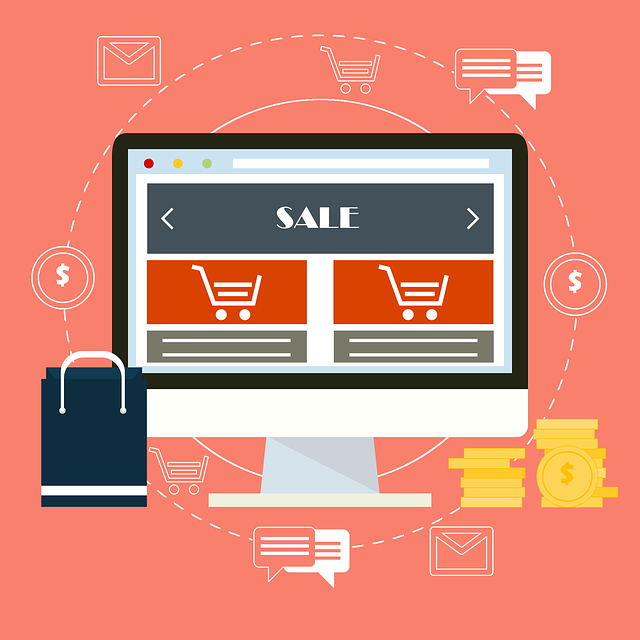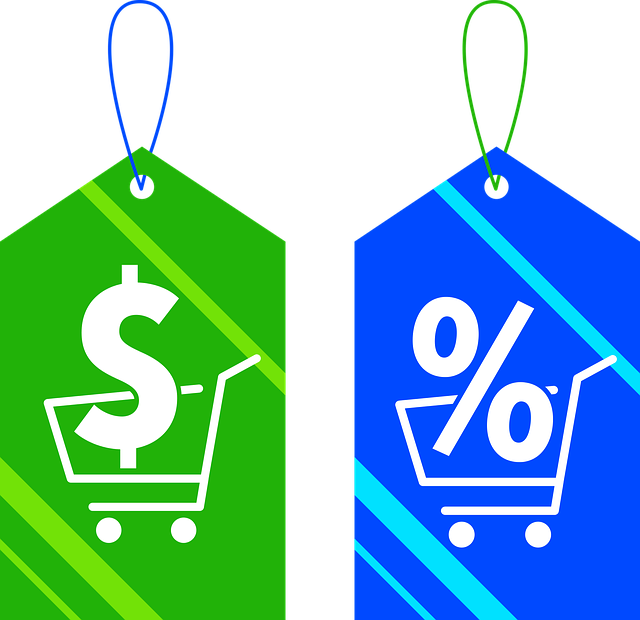We’ll increase conversions by
20-100+%
on your website.
Get a FREE Audit today
See how we can help your business increase conversion rates
Creating a Winning Ecommerce Homepage: Best Practices for Increased Conversions and Revenue

What is an E-commerce Homepage?
An e-commerce homepage is a gateway to a customer’s shopping experience. It serves as an interactive introduction, with navigation menus and product displays creating first impressions that can lead customers toward conversions.
Homepages play an essential role in website success – making every element count for optimal engagement!
Importance of an effective E-commerce homepage
A well-crafted ecommerce store homepage is essential for delivering an optimal user experience. Quality design and usability can create a positive first impression while clear navigation menus, search bars, and breadcrumb trails streamline the customer journey.
Furthermore, product displays provide quick access to featured products or promotions helping drive engagement and boost sales.
Finally, strong calls-to-action ensure customers don’t miss out on any deals you have available!
Here are 6 best practices for creating an effective ecommerce homepage.
1.) Navigation

Experiences that keep customers engaged and returning to a website are key for ecommerce platforms success.
To ensure this, simply having great products or services isn’t enough; it’s essential to have effective navigation in place as well.
Navigation needs to be intuitive so visitors can orient themselves easily without becoming frustrated with complex steps or unhelpful menus.
By optimizing site flow through clear yet creative navigation structures, sites give users an enjoyable experience that encourages them to convert into paying clients!
Clear and intuitive navigation menu
An effective and user-friendly navigation menu is essential for businesses to ensure customers can easily access the product or services they offer.
For a clear and intuitive experience, menus or product category pages should be organized into logical categories with simple labeling that enable visitors to quickly identify where they want to go within the website.
Additionally, organizations must remain consistent throughout all pages in order for navigating from page to page seamlessly; visibility also plays an important role as this allows customers easy access without having them dive too deep into each section of your site’s architecture.
Search bar functionality
An effective search bar functionality is a crucial element of any ecommerce website, allowing customers to quickly and conveniently find the products they seek.
Strategically placed at the top of pages such as homepages for optimal visibility, these features provide an intuitive text field where shoppers can enter their query alongside autocomplete suggestions to aid in honing their search results.
The end result? An improved customer experience achieving faster access to desired items!
Breadcrumb trail
Breadcrumb trails are an effective way to help customers gain clarity on the website’s structure and know their current location within it.
Simplify navigation with a secondary system equipped with links that accurately reflect each main category, subcategory, and page; giving users all they need for a seamless exploration of different sections in just one click!
Breadcrumbs provide an intuitive, helpful way for your target audience to navigate their website experience.
By offering a fast and convenient route back up the hierarchy of pages or categories, they not only foster satisfaction but also result in higher conversions.
In short – breadcrumbs are invaluable navigational aids that should never be crumbed underfoot!
2.) Product Display

Product display is key to encouraging customers to make a purchase from an online platform. From the visuals of producing high-quality images, dimensions, and features captured in descriptions, to pricing that drives the purchasing decision – each element plays its part in customer conversion.
High-quality product photos give consumers their first impression by providing them with a detailed visual representation of what they are buying; accurate & descriptive text helps inform buyers about critical details like size and color variations while leaving no room for confusion when it comes time for checkout!
High quality images of product
High-quality product photos are essential for providing customers with the information needed to make informed purchasing decisions and create a positive visual experience.
The benefits of clear, detailed visuals allow existing customers to assess features such as texture, color, and design from multiple angles.
Such accurate representations minimize customer disappointment by accurately conveying what can be expected when they receive their products.
Professional-quality images can be a valuable and versatile tool to drive sales of the products you sell online.
With stunning visuals, customers are able to make informed decisions when comparing different items without having the need for product descriptions.
Additionally, optimizing the images for mobile ensures customer satisfaction with an optimal viewing experience on any device type or size.
Product images are invaluable assets to any product display. Not only do they provide customers with the info needed to make an informed decision, but also add visual appeal and increase perceived value.
They can even act as stand-ins for long descriptions, making products easier and faster to get acquainted with!
Product descriptions and pricing
Product descriptions and pricing in your online stores are fundamental for creating a successful relationship between customers and businesses.
With accurate data about the item’s features, dimensions, materials, and prices – shoppers can confidently compare items in your online stores to make wise purchasing decisions that bring maximum value.
Furthermore, this transparency engenders trust with consumers over time by allowing them to feel in control of their choices; leading to increased consumer loyalty.
Crafting a positive perception of product value is essential to successful sales conversion and trust building.
To this end, pricing on your online business should be used strategically to create an exclusive feel on the customer’s part while ensuring products are optimized for mobile devices so that shoppers can quickly review details from their smartphones or tablets.
Transparency in materials – including comparison and additional information – facilitates informed decision-making by customers who will then view your brand with increased confidence!
Customer reviews and ratings
Customer reviews and ratings are an essential part of product display, allowing customers to make informed decisions on their purchases with valuable feedback from other users.
This information provides insight into the products offered including quality and performance – serving as a source of trust for potential buyers.
Reviews also provide evidence that others have purchased these items – giving consumers assurance in their purchase decision!
Not only do they create a sense of social proof to build trust with potential customers, but by influencing the decision-making process, customer reviews can make or break sales.
Furthermore, these insights offer companies great visibility into their products’ performance – so that issues can be identified and addressed swiftly before further impact is made on your bottom line.
Reputation management should dovetail with customer reviews and ratings, giving your company the chance to provide timely responses directly on mobile devices such as tablets and smartphones.
Enhance both reputation protection and Mobile Optimization by making sure customers can easily access important feedback right at their fingertips!
The information provided by these reviews can be instrumental in determining whether or not someone makes a purchase – so make sure you take advantage of their all-important role!
3.) Call-to-Action

Your product display can make or break the customer buying experience.
Product images create an initial impression of your items and give potential buyers a detailed visual representation for comparison shopping.
Accompanying information, like accurate descriptions with details about size and features as well as pricing info helps customers understand everything they need to know before making their purchasing decision.
Invest in high-quality visuals and provide comprehensive specifications – then you’re sure to wow even the pickiest shoppers!
Prominent “Add to Cart” or “Buy Now” buttons
Prominent “Add to Cart” or “Buy Now” buttons are essential elements in a successful call-to-action. Strategically placed near product images and descriptions, these functional features not only provide an engaging shopping experience but also encourage customers to make the final purchase decision.
Creating and featuring prominent “Add to Cart” or “Buy Now” buttons is key for any successful online retail business.
Not only do this calls-to-action encourage customers to convert, but they should be easy to find on the page near relevant product images and descriptions – enabling swift transactions that bolster sales figures.
Customers are more likely to make a purchase when the final steps for checkout are straightforward – that’s why strategically placed and visually appealing “Buy Now” or “Add to Cart” buttons on product pages are key.
To ensure optimal user experience, these essential call-to-actions should be optimized across devices (from desktop browsers, tablets, and mobile phones) as well as accessible for users with disabilities.
Limited-time offers and promotions
Make sure your promotions stand out from the crowd with time-sensitive offers! With limited availability, customers are enticed to take action now rather than wait.
Create a sense of urgency and capitalize on that by providing exclusive deals or discounts.
Looking to up your promotional game?
Try utilizing these limited-time offers and promotions for a surefire success: offer sales discounts on specific products or categories, gift customers with coupons redeemable at checkout, and make free shipping available temporarily – even better if it has no minimum purchase requirements!
Consider offering unique access to exclusive items, an irresistible buy-one-get-one deal. To draw in the excitement keep track of time using countdown timers featured prominently throughout the website.
Limited-time promotions and offers are a great way to increase sales by creating a feeling of urgency in your customers.
Make sure that they stand out on pages such as the homepage, ensuring that their purpose is clear and easy to use.
Above all else, remember – these deals aren’t eternal; enforce an expiration date so you don’t leave yourself open for abuse!

Easy access to the shopping cart or checkout
Customers will find navigating the online checkout process effortless. Designing a shopping cart icon or button that is displayed prominently across your website gives customers instant access to complete their purchases quickly and seamlessly. Ensuring customer satisfaction during their online shopping experience starts with easy access to the checkout.
This includes visibility of the button across all website pages, intuitive placement for quick purchases, and optimization on mobile devices.
Through these simple steps, businesses can ensure that customers are able to complete their transactions without difficulty or frustration.
To provide the best shopping experience, it is essential for customers to have convenient access to a secure checkout process.
This includes providing clear progress indicators during their journey and employing SSL encryption measures to protect sensitive personal and payment information.
Creating an effortless journey for customers to finish their purchase is essential.
Give them clear access points right away so they don’t have to search too far, making the checkout experience swift and straightforward.
This will ensure a seamless buying process that’ll leave shoppers happy!
4.) Branding

Consistent branding throughout the site
A strong brand identity can significantly pay off in increased sales and customer loyalty.
Incorporating cohesive branding across your website will help to develop trust, bolster recognition and create a sense of familiarity with prospective customers that keeps them coming back for more!
By utilizing consistent branding throughout an ecommerce website, customers can quickly form meaningful connections with the brand.
This recognition leads to increased loyalty and trustworthiness while also providing a positive user experience thanks to cohesive design elements that are visually attractive.
Establishing and maintaining a recognizable brand is essential to success in the ecommerce world.
Creating consistency throughout your site can help customers identify with your company’s values, message, and design elements like color schemes, typography, logo, and imagery.
Making sure that all of these branding aspects are optimized for mobile devices will ensure clear visibility on any device used by potential customers.
Having strong, unified branding is essential to have a good ecommerce website design. It not only reinforces trust and familiarity with customers – a key to gaining loyalty, but it can also help increase brand recognition on the web.
In other words: consistent branding chases away doubts about your company, and boosts presence in an overcrowded marketplace – leading to higher sales and customer retention!
Use of logo, colors, and imagery to establish brand identity

Brand identity is so much more than just a logo; it’s an investment in customer recognition and loyalty.
Eye-catching colors, imagery and a consistent visual presence help create memorable brands that stick with customers from their first visit to your site all the way through repeatedly coming back for more.
A logo can be a simple and recognizable visual symbol that helps to convey the brand’s message in an instant.
Colors used consistently across products, websites, and other materials will help customers identify it more quickly while imagery such as photos, illustrations, or lifestyle shots create a visual language to represent the brand’s values.
With these elements working together, you can establish your own unique identity!
Creating a recognizable brand identity starts with key elements like logo, colors, and imagery.
Keeping these ever-present throughout your website for consistency can help customers establish familiarity with the look of your business.
To really stand out, make sure to optimize branding elements by contrasting them from their background so they’re easily spotted on any device — even smartphone or tablet screens!
Your logo, colors, and imagery are like the bricks that construct your brand identity – they form an essential foundation.
Incorporating them consistently throughout your site helps customers to recognize you at a glance and foster familiarity with each visit.
Be sure to ensure these elements have enough contrast against their background so they stand out on mobile devices as well!
5.) Mobile Optimization

As the number of customers using mobile devices to shop online increases, having an ecommerce website design that is optimized for mobile use has become more essential than ever.
Mobile optimization encompasses designing and creating a website with features that ensure ease of use on cell phones or tablets.
Responsive design plays a hand in this; it enables websites to adjust automatically based on device size and resolution for optimal user experience across multiple screens.
With these technologies in place, businesses can give their customers the best possible browsing journey from start to finish – regardless of what type of device they are using!
Responsive website design for all devices
Responsive design is a must-have for every website, allowing it to tailor its content and layout to any screen size or resolution.
Not only does this create an immersive mobile experience that can capture customers’ attention – even on the go – but also helps ensure they have no difficulty accessing information while using their smartphones, tablets, and other devices.

Enhancing user experience and increasing website accessibility – are just two benefits of responsive design when it comes to optimizing your site for mobile.
With more customers accessing the Internet from their phones, having a web page that caters to this need can make all the difference in reaching wider audiences.
Responsive ecommerce website design offers an easy-to-navigate platform no matter what device is being used so users get the same browsing experience on any screen size.
Responsive design is a key element of mobile optimization, helping to boost user experience and SEO.
It reduces loading times, ensures brand elements remain consistent across all devices, provides touch-based navigation tailored for smartphones or tablets plus optimized forms – making it easier than ever to navigate via handheld device!
Mobile optimization is becoming increasingly important in the digital world, and responsive design can be a key factor to success.
Responsive design helps your ecommerce website load faster on mobile devices, preserves branding elements like logos and colors across all platforms for consistent user experience, offers specialized features tailored towards touch-based navigation and forms that improve the usability on smartphones, as well as increases SEO by making search engine indexing more effective.
Easy access to navigation and call-to-action buttons
For business owners, creating a seamless mobile experience for customers is essential.
Making navigation and call-to-action buttons easily accessible can help ensure that visitors to your website have the best possible user journey when accessing it from their phones or tablets, potentially leading to higher conversion rates.

For mobile optimization, easy access to navigation and call-to-action buttons are key. Navigation should make it simple for customers to explore different sections on their devices – delivering an improved user experience.
Plus, touch-optimized call-to-action buttons like “Add To Cart” or “Buy Now” help increase conversion rates by making checkout as painless as possible!
Improve the user experience on mobile devices by optimizing your ecommerce stores navigation and call-to-action buttons.
They should be big enough to easily tap with a finger, placed in an intuitive location on the screen, and accessible for those with disabilities using standards of accessibility. Plus added bonus – use touch-based navigation or add forms optimized specifically for mobiles!
Mobile optimization is essential for a quality customer experience. By incorporating easy-to-find, touch-navigable buttons such as a call to action and simple navigation features, customers can swiftly access all the primary functions of your site with minimal effort.
This not only enhances user convenience but also raises conversion rates by making it easy to move through the page and complete purchases on mobile devices!
6.) Security and Trust

Ensuring customer safety and trust is paramount for ecommerce websites.
To ensure this, secure payment options should be used to protect customers’ personal and financial information during the checkout process.
Installing an SSL certificate or utilizing a trusted payment gateway such as PayPal are great ways to do so. Additionally, displaying certified ‘trust seals’, which certify that your website meets certain industry standards (e..g VeriSign), can help further increase customer confidence in purchasing from you!
Secure payment options for your ecommerce business

When shopping online, customers want reassurance their payment details are kept safe and secure.
This is why offering reliable security measures during the transaction process is so important – it instills trust in buyers to complete their purchase without worry or concern.
To guarantee a successful ecommerce homepage, providing secure payment options should be a top priority!
Shopping online can be intimidating, as customers have to provide sensitive payment information in order for their purchase to go through.
To protect customer data, ecommerce homepages should employ secure options like SSL encryption, PCI compliance, and secure payment gateways such as PayPal or Authorize.net – these measures guarantee that credit card numbers are encrypted and kept safe from unauthorized use while they’re being transmitted between the buyer’s bank account and the website.

Adding an extra layer of protection to online transactions is essential for customers’ peace of mind.
For example, two-factor authentication gives a customer the opportunity to prove their identity with either a fingerprint or a one-time code sent directly via text message.
Additionally, tokenization replaces credit card information with unique tokens that can be used in future purchases without ever having to reenter those details again.
Lastly, optimizing payment options and ensuring they are available on mobile devices provides convenience and security while keeping all transaction info safe from hackers!
When it comes to ecommerce, customers need assurance and trust when making payment. That’s why leveraging secure options like SSL encryption, PCI compliance, two-factor authentication and more is essential for online businesses.
These measures help protect customer data while maintaining industry standards which helps create the confidence required for a sale.
Trust seals and certifications

Trust seals and certifications are an effective way to ensure customers feel safe when shopping online.
In just a glance, these badges or logos inform shoppers that the ecommerce website they’re visiting is legitimate and secure – providing assurance that their personal data remains private during each purchase!
Looking to bolster customer trust and security on your ecommerce homepage?
Ensure that you display the appropriate certifications, such as PCI-DSS compliance or an SSL certificate.

A seal for PCI-DSS compliances signals customers that your site meets international standards against credit card fraud – invaluable peace of mind in a digital world! AnSSL certification will provide further assurance by confirming secure encryption used while transferring sensitive info like debit/credit cards.
With the growing importance of online shopping, customers need reassurance that their data is secure.
Trust seals and certifications are invaluable tools in ensuring confidence on ecommerce homepages – with certified providers such as VeriSign, Norton Secured, and McAfee Secure leading the way.
These services provide an extra layer of security to give shoppers peace of mind while they purchase goods online!
Privacy policy and return policy of your business to consumer

As an ecommerce business, it’s important to provide your customers with a clear understanding of the processes you use for payment processing and handling returns.
A privacy policy and return policy can help ensure your customers are comfortable shopping on your website.
These policies typically contain key elements such as disclosing how personal information is stored securely, outlining refund rules & procedures, providing details about any third-party vendors involved in payments or shipping products ordered from the store, etc., enabling buyers to make informed decisions when making purchases!
When shopping online, customers should be aware of both the privacy and return policies for their chosen ecommerce website.
A privacy policy outlines how a business collects personal information from its customers; it will likely provide details about data sharing and retention as well.
Additionally, a return policy covers what items can be returned within which time frame , in addition to any conditions that must apply for a successful refund request.
Lastly, contact information such as email address or phone number ideally accompanies each of these policies so buyers may easily reach out with questions regarding either one.
With the growth of ecommerce, it is important to ensure that your homepage incorporates key policies in order to protect both you and your customers.
These include a refund policy on your ecommerce brands that outlines how refunds are handled and any associated fees as well as compliance with laws such as GDPR, CCPA, or HIPAA.
Additionally, mobile optimization should be taken into account so that these critical pieces of information can be easily accessed from smartphones or tablets by consumers.
To protect yourself and your customers, it’s essential to be aware of the different types of policies out there.
A privacy policy reveals how a company collects, secures, shares & stores data – essentially what happens after someone submits personal information. On the other hand, return policies help ensure customers’ satisfaction by assuring them about refunding or exchanging when needed.
Conclusion
Recap of best practices for ecommerce website design

An ecommerce homepage is the crucial first impression for online customers. Investing in optimal design and optimization can give your business a competitive edge, helping to create positive user experiences that result in higher conversions!
To ensure customer satisfaction with the ecommerce shopping experience, it’s important to provide comprehensive and well-structured navigation menus.
Additionally, high-resolution product images should be included as they can help customers visualize what they’ll receive upon purchase.
Furthermore, detailed product descriptions and correct pricing give shoppers all of the information needed to make an informed decision before buying a particular item. Finally, by including customer reviews or ratings online merchants can build trust among their patrons immensely!

To maximize conversions, feature prominent “Add to Cart” or “Buy Now” buttons and offer limited time offers that create a sense of urgency.
Ensure customers have an easy path from your products page to the shopping cart by providing consistent access throughout the site.
By consistently implementing branding across all pages on your website, you’re encouraging trust and recognition with customers! Creating a successful ecommerce homepage starts with ensuring customers have confidence in your website.
Responsive design allows them to browse and purchase on any device, while secure payment options protect their personal information. Trust seals and certifications let shoppers know that the site is reliable, as do privacy policies and return processes which explain how customer data will be handled – all part of building trust for confident purchasing!
Effective and good homepage design are essential for driving conversions and customer satisfaction. Ensuring a seamless mobile experience, secure payment options, and clear access to shopping cart/checkout pages along with establishing trust through policies, seals, or certifications will help build up an enduring relationship between business owners and their customers.
Importance of testing and optimization for ecommerce store

Empower your ecommerce business with testing and optimization! By regularly evaluating homepage elements, businesses can make timely improvements to their customer experience—which helps boost conversions and drive more revenue. Plus, this process allows companies to identify potential issues quickly so they don’t affect users’ online journey.
Testing and optimization are essential elements of any ecommerce home page. They can help identify and address issues that might lead to a poor user experience or low conversions, such as slow loading times, unclear product descriptions, differing layouts or lack of trust seals. A/B testing is an effective way for sellers to compare two versions of the same homepage in order to determine which performs best with customers – from headlines down through images and beyond!
Testing and optimizing ecommerce homepages can be an incredibly valuable process. Heatmaps, analytics tools and mobile optimization are all powerful methods that businesses should leverage to gain insights into their homepage performanc. Heatmaps give visual feedback on where users engage with a page the most; utilizing analytics allows companies to track key metrics such as website traffic, bounce rate or conversion rate; while mobile optimization helps identify elements which do not display correctly across devices for maximum reach among consumers.
It’s essential for ecommerce businesses to regularly test and optimize their homepages- this can help identify any potential issues, enhance the user experience, drive conversions and boost revenue. Continual testing of homepage elements creates a better customer journey that not only increases engagement but also provides valuable insights into how users interact with your site.
Encourage readers to implement these practices on their own ecommerce homepage.

To keep your ecommerce homepage in top shape and maximize conversions, it’s essential to develop a habit of continuous optimization. Test various features such as layouts, headlines or images – track the performance using A/B testing tools and use analytics data to make informed decisions about what works best for customers’ experience. Regularly updating your website will help ensure new visitors have an enticing introduction that converts them into returning buyers!
Every business is unique, and what works for one ecommerce site may not be effective for another. Nonetheless, having a well-designed and great ecommerce website that provides an enjoyable user experience can lead to greater conversions and make all the difference in your online success! To ensure this happens with your own homepage, focus on creating visuals that are attractive yet trustworthy; emphasize mobile optimization; keep security at the forefront of design decisions – then monitor progress through regular testing and optimization. You can see some examples of ecommerce tests we’ve run on our blog. With these best practices implemented on your ecommerce platform or ecommerce journey, you’ll have a recipe for great customer experiences driving revenue growth!








